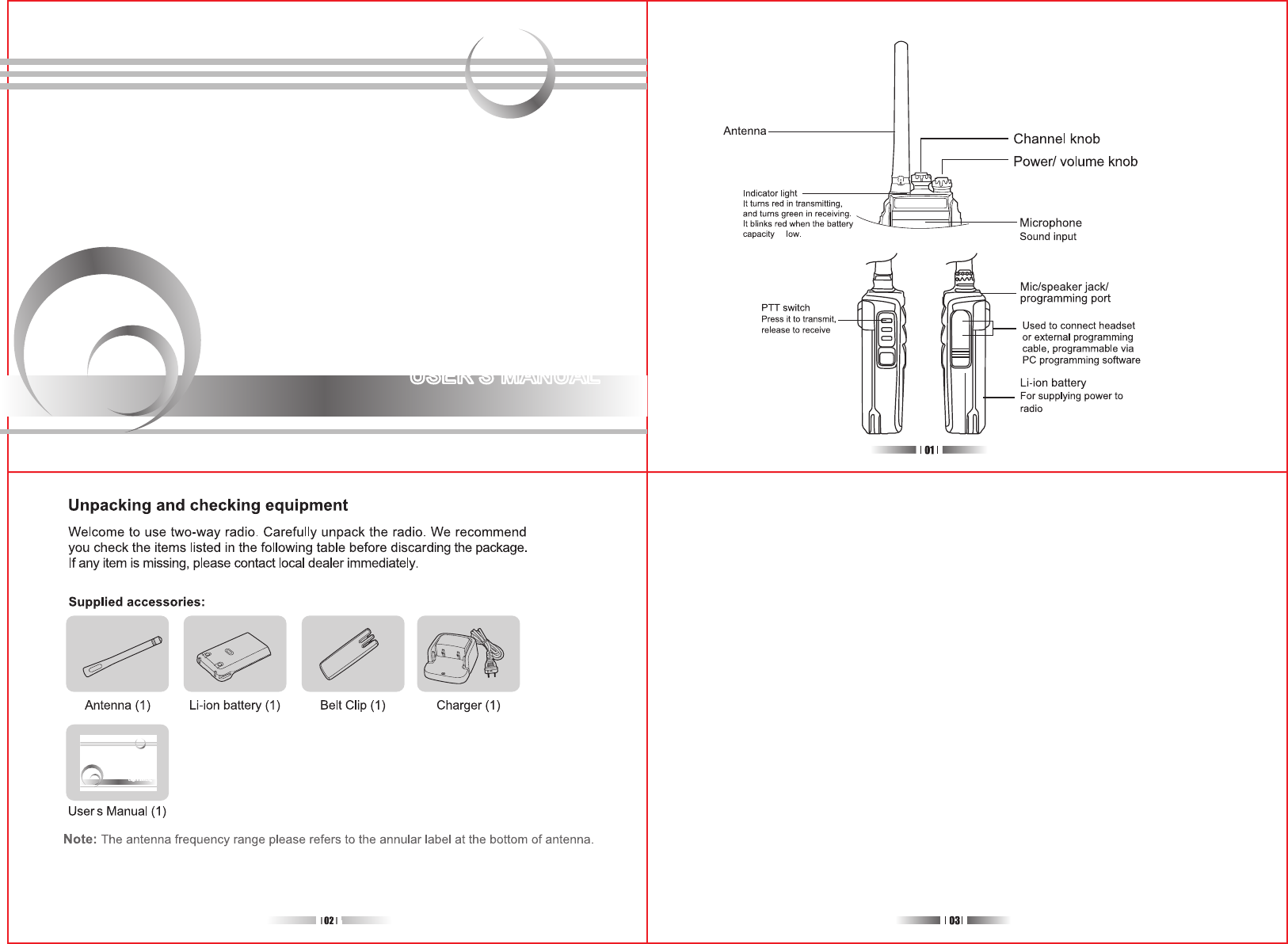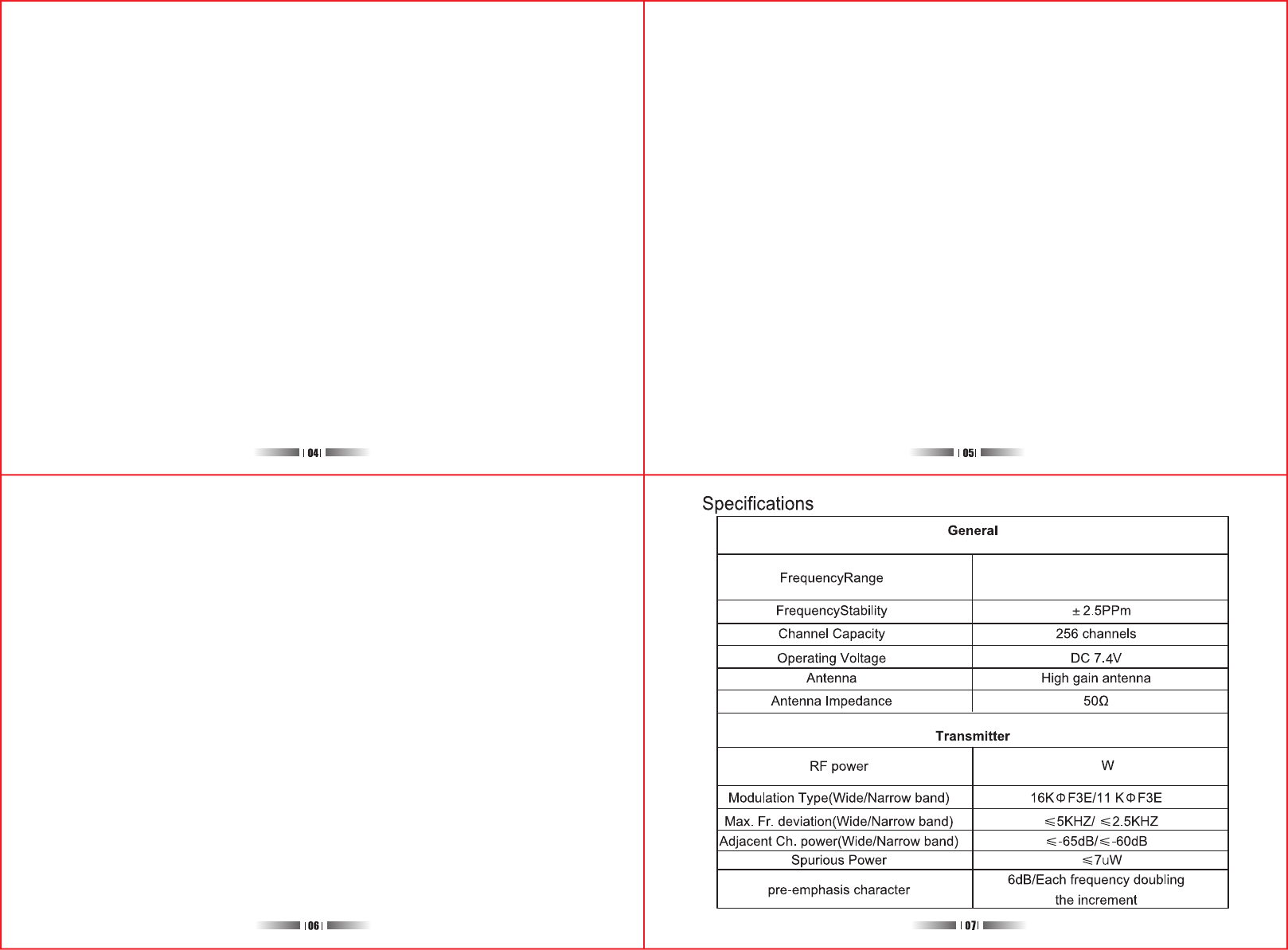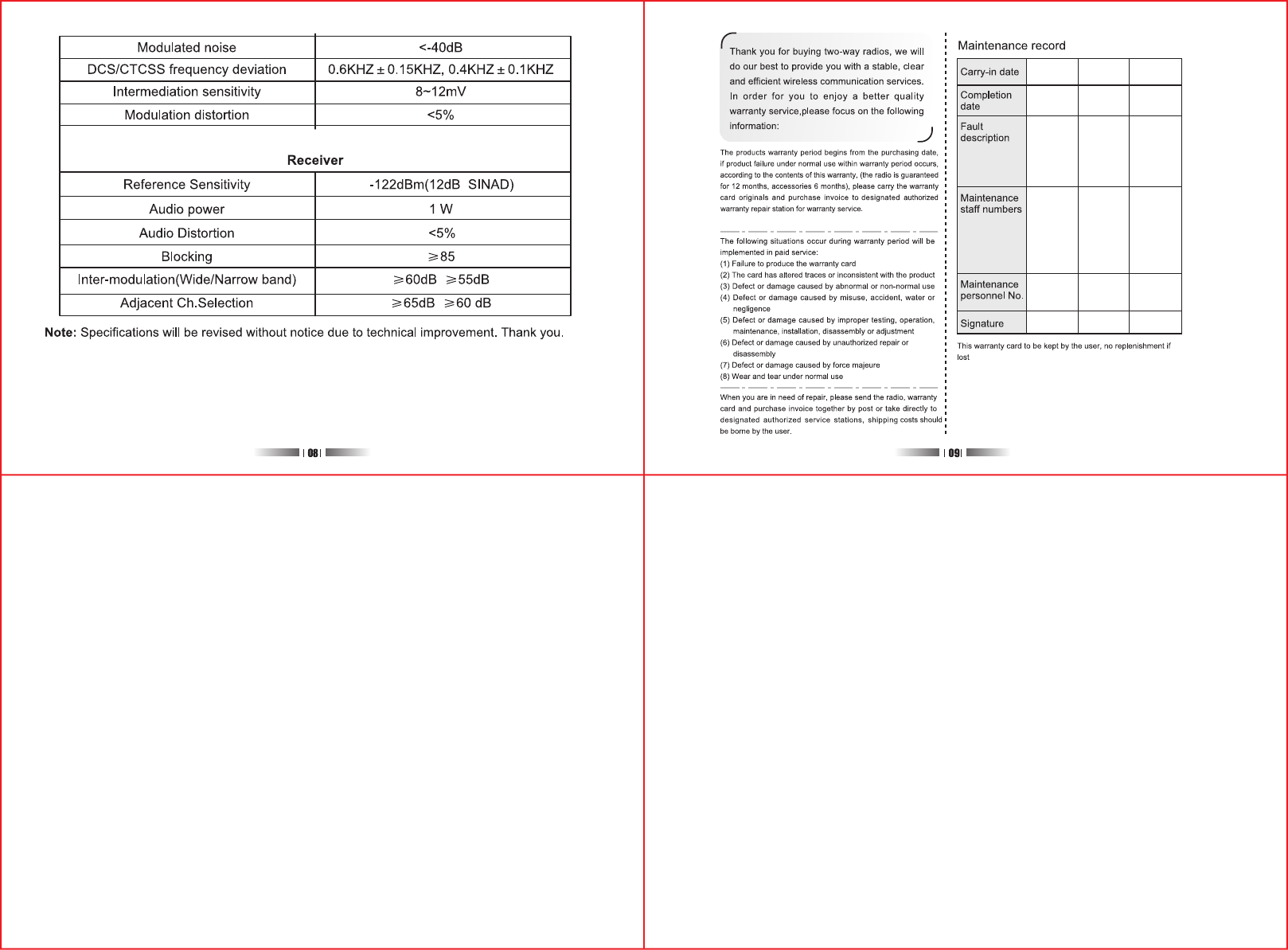TYT ELECTRONICS TYT-A5 Scanning Receiver User Manual
TYT ELECTRONICS CO., LTD Scanning Receiver
user manual

USER'S MANUALUSER'S MANUAL
MIC / SP
使用说明书
USER'S MANUALUSER'S MANUAL
Basic operation
1 Scan Function
When the radio is allowed to be scanned, which can be set by the software. you can press
the PTT key to turn on or turn off the scan. When the scan begins.indicators lights green.
the radio will can scan automatically from channel 1 to 16 which is defined as scan added.
When there is signal in the scanning channel, it will stop in the channel for talk.
Note:
When there is signal in the scanning channel, it will stop in the channel for a talk and after
several seconds.
Please note that scan is only available when there are two or more than two memory
channels and two or more scan added channels
2. Battery Save Function
This function can be set by the software.
Turn on this function can make the standby time more longer.
3. Scrambler
When the radio is allowed the scrambler function. and press the key. TX voice will be
sent out with scrambler. other radio only received the signal when its scrambler also
turns on.
4 Busy Channel Lock
You can turn on/off this function via software.
A: if the current channel does not have CTCSS/DCS, When there is signal. TX prohibited
when you press PTT.
is
Getting Familiar
Scanning Receiver
Scanning Receiver

5. Wide/Narrow Bandwidth Setting
B: If the current channel does not have CTCSS/DCS. when there is signal which
does not have CTCSS/DCS. TX prohibited vvhen you press PTT.
C: If the current channels does not have CTCSS/DCS. vvhen there is signal which have
CTCSS/DCS. the radio will transmit when you press PTT.
The default is wide band. You can select the wide band (25KHz) or narrow band(12.5KHz)
through the menu "Channel Spacing" of the "Channel Edit" in the software.
6 .VOX
Speak to the microphone in normal voice to transmit, no need to press PTT switch, turn
VOX on//off though the software.
A: when VOX is on in your working channel.
Speak to the microphone directly, it will transmit automatically.
The radio stops transmitting when there is no voice, and waits for receiving.
B: when a headset with a microphone is used.
When VOX is on, you should VOX again for the radio to identify voice volume.
If the microphone is too sensitive. the noise around radio will start transmitting.
If the microphone is not sensitive. the radio can not collect your voice. Please Adjust VOX
level well to guarantee smooth communications.
English/Chinese Voice Prompt
Voice prompt
The default setting is Chinese voice prompt. and you will know the working condition of
the radio with voice prompt.
1 ) The voice prompt can be selected "Chinese/English/Tone/OFF" through the menu
"Voice/Beep Tone" of the "Optional Features" in the software for. When choosing
"OFF", voice prompt turns off.
2) Channel annunciation: You will get to know the working conditions of current channel
which is being operated.
3) Low battery alert: The radio will alert you when the battery capacity reaches the
minimum operating voltage.
The default setting is Chinese voice prompt. When transmitting or standby. if the battery
capacity reaches the pre-determined low level. the indicator light blinks red. and a low
battery alert tone will be heard.
The indicating tone can be "Please change the battery". When the low battery alert occurs.
it can not transmit. please change or charge the battery.
The squelch level will determine the signal strength to open the speaker of the radio. If the
squelch level is lower. the background noise of opening the radios speaker will be higher.
and the corresponding communication range will be further. but the anti-interference
capacity will be weaker.
The default setting of squelch level is 5. you can adjust it through the menu -Squelch Level"
of the -Optional Features- in the software for. Level 0 to 9 can be selected. 0 is the lowest
level.
Power protection function
When the radio is in normal use or maintenance, the transmission will be prohibited if the
working voltage is beyond the normal supplying voltage. Lower than 3V or higher than 5V,
the transmission will be prohibition. The radio cannot power on when it is higher than 5V.
CTCSS/DCS
CTCSS and DCS is the sub-audio signaling, to prevent the radio from receiving unwanted
signal in the same channel.
When the CTCSS/DCS is set, then within the communication range, you can only receive
signals from the same channel with the same CTCSS/DCS setting. When the CTCSS/DCS
is not set, you will get all the signal from the same channel within the communication range.
Low battery prompt
Squelch function
Time out timer (TOT)
The purpose of TOT is to prevent any radio from talking in one channel for a long time.
and to prevent the transceiver from being damaged because of continuous transmission
If the transmitting time exceeds the TOT pre-set time. the radio will sound "Du". TX: 420-450MHz
2.5
RX: 400-480MHz

NOTE: This equipment has been tested and found to comply with the limits for a
Class B digital device, pursuant to part 15 of the FCC Rules. These limits are
designed to provide reasonable protection against harmful interference in a
residential installation. This equipment generates uses and can radiate radio
frequency energy and, if not installed and used in accordance with the instructions,
may cause harmful interference to radio communications. However, there is no
guarantee that interference will not occur in a particular installation. If this
equipment does cause harmful interference to radio or television reception, which
can be determined by turning the equipment off and on, the user is encouraged to
try to correct the interference by one or more of the following measures:
- Reorient or relocate the receiving antenna.
- Increase the separation between the equipment and receiver.
-Connect the equipment into an outlet on a circuit different from that to which the
receiver is connected.
-Consult the dealer or an experienced radio/TV technician for help
Changes or modifications not expressly approved by the party responsible for compliance
could void the user's authority to operate the equipment. This device complies with Part
15 of the FCC Rules. Operation is subject to the following two conditions:
(1) this device may not cause harmful interference, and
(2) this device must accept any interference received, including interference that may
cause undesired operation.
SERVICE SIGNALS IS PROHIBIITED UNDER FCC RULES AND FEDERRAL LAW.
WARNING: MODIFICATION OF THIS DEVICE TO RECEIVE CELLULAR RADIOTELEPHONE